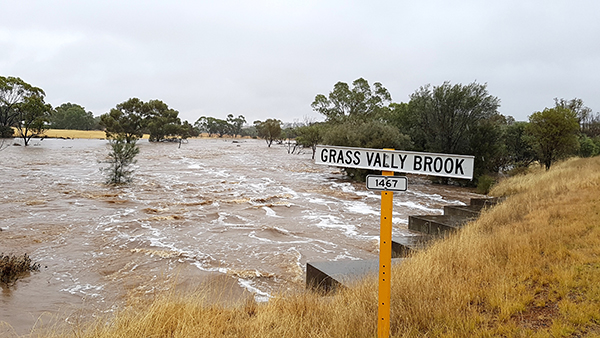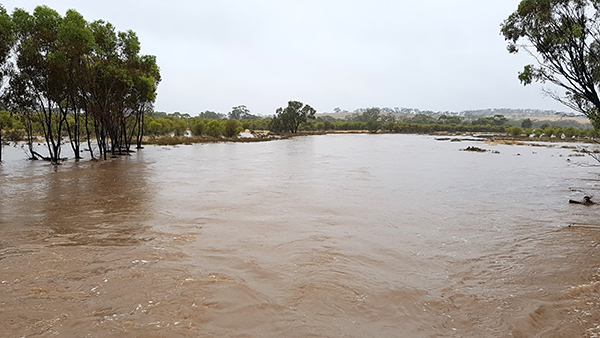If someone asked you if it’s normal to get summer rain in the Wheatbelt, how would you respond?
According to Burea of Meteorology records, sporadic summer rainfall generated by tropical cyclone activity in the north has always been part of life in south-west Australia.
However, with similar flood conditions occurring in the region in early January 2016, and rainfall records showing a very general increase in the number of years with above average summer rainfall for south-western WA; some people are wondering if this a symptom of a changing climate.

Flooding near Grass Valley, February 2017
The message from the Bureau of Meteorology is that rainfall in south-west WA will continue be characterised by high inter-annual variability against a background of generalised climate change trends. These are broadly speaking projected to be decreasing winter rainfall and increasing extreme weather events.
In fact, the long-term projections for summer rainfall presented on Wheatbelt NRM’s Climate Change Portal suggest a steady or decreasing trend in summer rainfall across the Avon River Basin to 2070. This doesn’t mean we aren’t in for summer floods in the near to mid-term future.
It is helpful to understand that La Nina conditions are associated with a higher frequency of tropical cyclone activity that can lead to summer rain for us. Keep your eyes on the Bureau’s ENSO Wrap-Up to give yourself some idea of whether summer rain might be on the way.
This can give you time to plan how to best capitalise on the moisture by planting summer-active or perennial pastures. Don’t forget it is important to protect your soil and the local waterways from erosion and pollution by revegetating degraded areas and riparian zones as well as maximising your nutrient-use efficiency.

Flooding in a sandalwood plantation along the Mortlock River, February 2017


